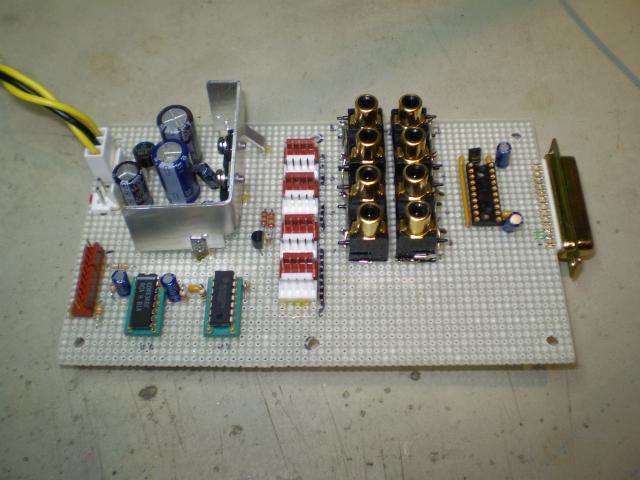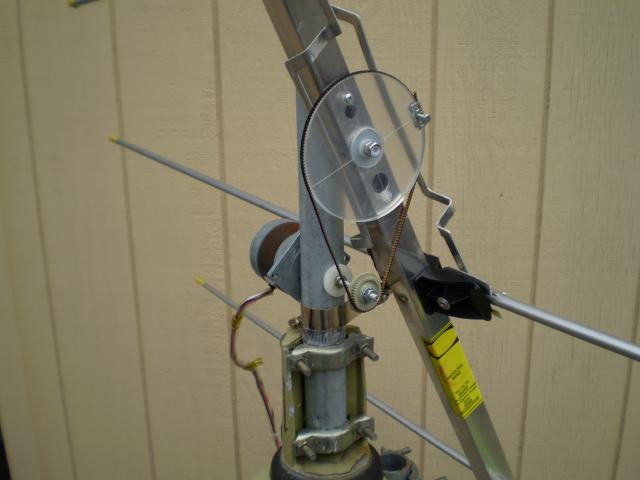
This is the core of the Solar Monitor project. There is a schematic here. This board holds the A/D converter which takes the signals from up to 8 bar graph/amp boards to be digitized and logged by Radio Sky. It also does the power distribution and some other house keeping functions.
In the upper left is the power input. An 18V Center tapped transformer from Jameco connects to the 3 pin molex. That gets turned into +- 10 or so volts DC, which is then regulated down to +- 8VDC by a 7805/7905 regulator pair. You can just about see them mounted to the heat sink - another part scavenged from a dead PC power supply.
Just below the transformer connector is another input from a 5V/3A switching supply from Jameco that supplies the logic and LED power.
The row of smaller molex connectors in the center is for the distribution of power to each of the bar graph boards (BGBs). Next to them are the 8 RCA jacks for the signals from the BGBs. Each BGB does a precision rectification, gain, and offset of the raw audio coming into it.
Finally on the far right is the socket for the MAX186 and the connector to the host computer.
In the lower left corner there is a 74HCT132 quad nand gate that handles the alarm function. Each BGB has an option to drive an open collector alarm bus when the top-most LED is lit. This gate latches that signal and generates a beep.
Next to the '132 is a 74HCT4538 dual one-shot. It's configured to time out if there's no activity on the A/D chip select for more than a second. It has a red/green LED attached so I can tell at a glance if the computer has stopped getting data from the A/D.
In the schematic, the LEDs, Speaker, etc are shown as being on the board for clarity. Next to each one is a tag showing which pin on the 10-pin molex connector it actually goes to.
This still needs some testing, and then it's time for the mechanical work to put the card cage together.
Cheers,




 Calendar
Calendar




